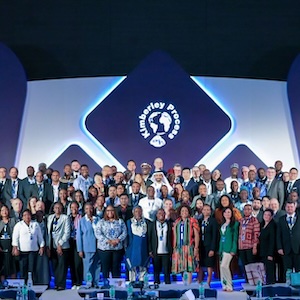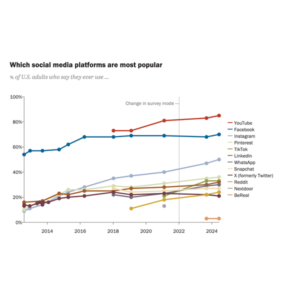
JCK editor-in-chief Victoria Gomelsky and news director Rob Bates speak with forecasting expert Nancy Leach, cofounder of consulting firm Gemedge. Nancy has extensive experience in the jewelry industry, having spent decades at Swarovski, where she worked on the brand’s first jewelry collections and forays into lab-grown stones as well as honed her expertise in identifying industry trends. She recalls her early days in the business (including surviving a store robbery as a teen) and reveals the most exciting trends emerging now.
Listen Now
Sponsored by De Beers: institute.debeers.com
Show Notes
02:12 A harrowing introduction to jewelry
05:31: The Swarovski years
09:50 Forecasting experts
12:09 Could creativity save lab-grown?
17:00 Key trends, from wellness to storytelling
Episode Credits
Hosts: Rob Bates and Victoria Gomelsky
Producer and engineer: Natalie Chomet
Editor: Riley McCaskill
Plugs: @jckmagazine; institute.debeers.com; Gemedge
Show Recap
A harrowing introduction to jewelry
Victoria and Rob welcome guest Nancy Leach, cofounder of Gemedge Studio, a consulting and forecasting firm. Nancy has deep expertise in pinpointing emerging trends and decades of experience in the jewelry industry. Now based in Austria, she was born and raised in Ontario, Canada, where she started working at her brother-in-law’s jewelry store as a teen.
She and two other young coworkers were in the store alone one evening when two men came in just before closing. They asked to see a ring, but all three girls felt instantly uneasy. When they hesitated to open the display cases, the men smashed the glass and stole the jewelry. It was a harrowing experience, but Nancy resolved not to let anyone drive her out of the business. She spent the next eight years expanding her knowledge by working for Canadian jewelry retailer Birks, learning the ins and outs of sales.
The Swarovski years
Nancy left Birks in the mid 1990s to join Swarovski, which at the time was unveiling its initial collections of fashion jewelry. She helped introduce the brand and build its reputation with independent jewelry retailers across western Canada.
When a job opportunity arose at Swarovski’s corporate office in Austria, Nancy seized it. The location was beautiful, she says, but the job change gave her culture shock: She went from traveling a lot to staying in one place and working in an office setting.
Once she adjusted, she found the work fascinating. In the early days, Nancy worked closely with Nadja Swarovski, whose focus was to “get back to the roots and the DNA of Swarovski, working with young designers…to get them to work with the product, but also to support them on their journey and to realize their creativity.”
Rob points out that that Swarovski was one of the first companies to explore lab-grown diamonds. “Being an early adopter with such an amazing material was something they wanted and needed to explore,” says Nancy, who handled sales and marketing of both natural and created gemstones during her years with Swarovski.
At first, lab-made stones weren’t an easy sell, she says. “It’s only now, many years later, that consumers are starting to accept lab-grown diamonds.”
Forecasting experts
At Gemedge, Nancy and colleagues Birgit Rieder and Vivienne Becker are continuing the work they did together for many years at Swarovski: observing the market and identifying emerging fine jewelry trends.
Despite the rise of AI, ChatGPT, and user-generated content, “there’s still a need for humanized predictions, especially in the fine jewelry industry,” Nancy says. “The know-how is not always on the internet.”
Many of the recent trends they’ve identified are highlighted in Gemedge’s “2025+” report, published digitally in February.
Could creativity save lab-grown?
Nancy believes the future of lab-grown diamonds lies not in price but in creativity, as LGDs offer design potential that’s impossible with natural stones. Some of the most exciting examples involve work with color, such as FRED’s Audacious Blue diamonds, and Jony Ive and Marc Newsom’s metal-free rings made entirely of lab-grown material, introduced in 2018. “That was really the start of the innovation,” says Nancy.
She’s also a fan of the Future Rocks x Lightbox partnership, which has produced such imaginative pieces as rings with shanks made of lab-grown sapphire. “It’s totally creative. It’s not mirroring what natural diamonds are doing. It’s finding a completely new expression and giving the designers the freedom to play,” Nancy explains.
Rob wonders whether adequate demand for such inventive offerings exists. Do people still prefer tried-and-true imitations of natural diamonds? There’s always hesitation to embrace new looks, Nancy concedes, but younger brands are finding success with innovations that align with their brand identity. Take Unsaid, she says: That brand honors its origins in natural diamonds and cutting expertise but applies it to lab-grown stones to create unique products. Other companies to watch include Kimaï, Pandora, and Swarovski, according to Nancy.
Key trends, from wellness to storytelling
Wellness is another buzzword on everyone’s radar. “Natural gemstones have a lot of ancient medicinal meaning,” Nancy says, and manufacturers of products from cosmetics to bottled water are tapping into that. Examples: Gold is showing up as an ingredient in moisturizing creams; face masks are being made of rose quartz; VitaJuwel water bottles come with pods of crushed gemstones.
While jewelry retailers generally don’t carry these products, it’s clear that “jewels and gemstones have gone beyond the traditional classical wearing of earrings, necklaces, bracelets,” Nancy says. “We’re jeweling our eyewear. People are putting diamonds in their teeth.”
“It’s the best time for jewelry,” she says. “We’re all self-purchasing. Jewels will continue to be the height of self-expression.”
Digital jewelry, too, is gaining popularity. Victoria ponders if bedazzling avatars might have been a 2020 lockdown fad, yet Nancy says they can’t be dismissed, given gaming’s enormous popularity. By 2030, that industry is expected to grow to almost $700 billion, Nancy reports. “Younger generations are more online than they are [in the physical world], and bringing these two worlds together—the physical and the digital—is going to be a huge topic.”
Rob asks about the importance of Instagram and TikTok for jewelry sales. According to Nancy, lots of people see TikTok as crucial, especially for the growth of younger businesses. However, pending legislation in the U.S. may impact its relevance.
On the other hand, a counter-trend is emerging: Rather than send influencers an endless slew of free products, some companies are zeroing in on personalization, loyalty, and direct contact with consumers. “People are reverting to emails, newsletters, and targeted personal contacts,” she says.
Other noteworthy shifts include India’s emergence as a luxury market, increasing interest in colored gemstones, and unisex jewelry. “It’s no longer just for men or for women, and the designs coming out into the market really reflect this,” says Nancy, citing David Yurman’s latest collections as an example.
Finally, designers and consumers are putting more emphasis on the storytelling aspect of jewelry and on jewelry pieces as works of art. What matters more than material is uniqueness, creative expression, and giving the customer interesting choices, Nancy says.
Any views expressed in this podcast do not reflect the opinion of JCK, its management, or its advertisers.
Follow JCK on Instagram: @jckmagazineFollow JCK on Twitter: @jckmagazine
Follow JCK on Facebook: @jckmagazine







